Digital Marketing in South Korea: A Crash Course
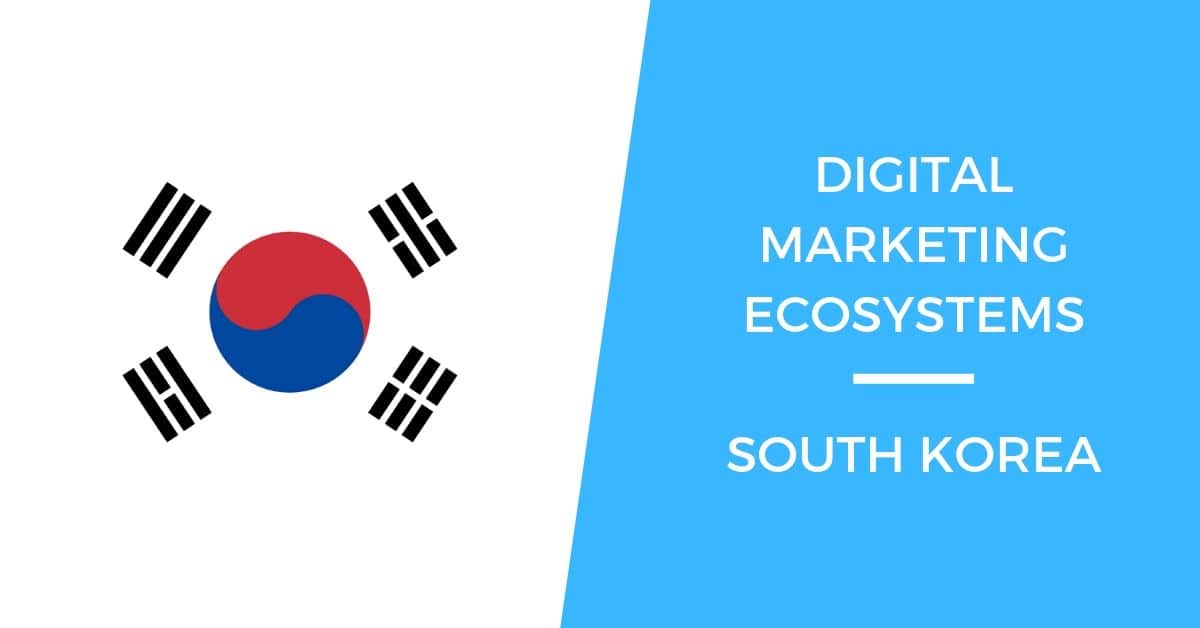
How does digital marketing in South Korea work?
In a word: differently.
South Korea is one of the very few countries where Google isn’t the dominant search engine, and because of this any many other reasons, has developed its own unique marketing ecosystem.
I’ve always been fascinated by Korea: it’s a market that’s on my radar in my current role doing Asia marketing at HubSpot. I think K-pop is awesome. I used to live and work in Korea, and visit fairly often.
Though every time I visit South Korea, it feels like I’m in a weird version of reality. Things feel familiar, but everything is different.
It turns out that Korea’s digital marketing ecosystem there is the same way.
This post is my analysis of how it’s different, why it’s different, and what it means for marketers — particularly B2B marketers like me — who are curious about expanding further into Korea.
Let’s dive in:
Naver is a Core Part of The Digital Marketing Ecosystem in Korea
Any conversation about digital marketing in South Korea has to start by talking about Naver, its omnipresence, why it currently beats Google Search in Korea, and why most “digital marketing” as we know it is equivalent to “doing stuff on Naver.
Naver dominates because it is 100% focused on Korea, and thus is completely optimized for Koreans, the Korean language, and Korean online behavior.
Contrast this with Google Search, which currently is really just the Google you get everywhere else but with some localizations for Korea.
I should note that head-to-head comparisons between Naver and Google Search are problematic, since Naver is much more than a search engine. It’s a portal, which you can think of search engine plus content consumption & discovery.
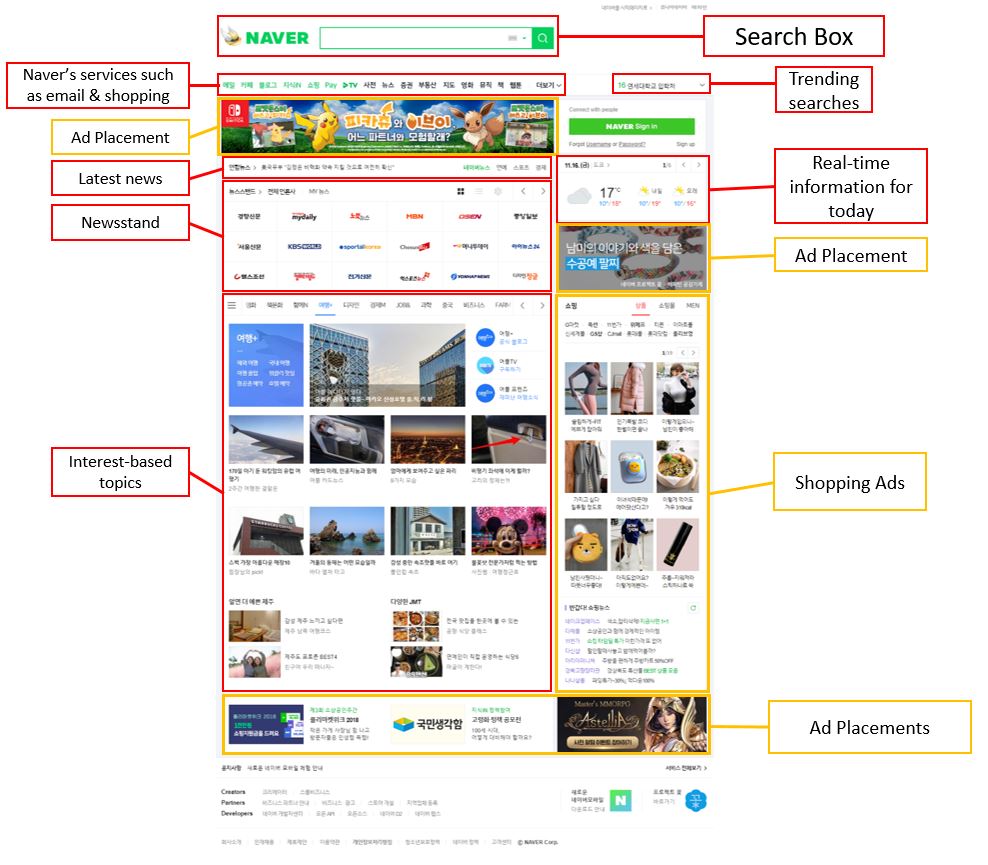
Koreans spend a lot of time on Naver, to the point where it holds its own against the major social networks:
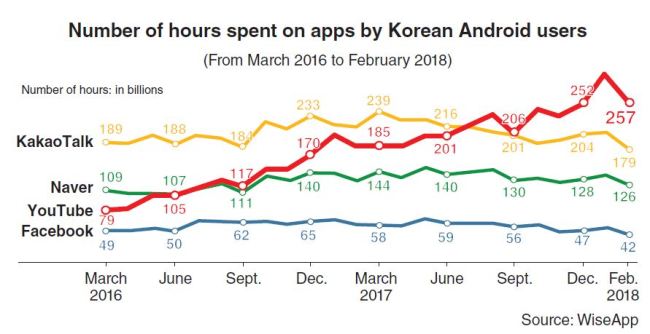
Naver’s ubiquity means that it has huge influence what Koreans see on the web. One could argue that it even shapes the online behavior of Koreans.
Naver is a big reason why most non-Korean marketers are thrown for a loop when thinking of digital marketing in Korea. Most of us, especially B2B marketers, have been trained to think in a Google / organic / owned media paradigm: obsessing over keyword research, building up email databases from lead gen activities, increasing traffic to our websites, map SEO, etc.
Very little of that knowledge is useful when it comes to Naver.
Let’s see what this looks like in practice.
How To Do Marketing on Naver
Naver is a platform that covers a very broad spectrum of use cases. You may have heard that Naver is the “Google” of Korea. Correct but incomplete. It’s more like a mashup of Google Search + Quora + Reddit + Medium + Flipboard.
We’ll focus on understanding Naver by drawing a contrast to how we normally think about SEO.
How do you do SEO on Naver?
The short answer: you don’t. At least not in the way you usually think about SEO.
The longer answer is complicated, because of how most of us think about SEO. Most people have a mental model for SEO that’s influenced by the Google paradigm, so we say things like:
“Let’s compete to be one of the 10 blue links.
Let’s improve our Quality Score so our ad appears higher.
Let’s get in the local pack…”
Naver doesn’t work like that.
Remember, Naver is more of a content platform and a directory, not just a search engine. And so its SERP tries to send you to other Naver properties. Here, it will be easier to explain when you look at a Naver SERP:

The top of the page is Ads, everything below that is a mostly content from other parts of the Naver platform, and only at the very bottom do you get “organic” results from around the web.
Once you wrap your head around how the Naver SERP is laid out, it actually reveals a lot about how Naver fits into the digital marketing ecosystem in Korea.
We can reasonably infer the following things about Naver:
- Naver is the best at giving Korean searchers what they want. People keep coming back and using Naver despite a fat block of the SERP being ads.
- Pay to play is the norm, if you want to consistently build awareness from Naver, get ready to pay for it.
- Naver uses its a monopoly position to incentivize companies to build a presence on Naver, instead of their own website.
If you want to learn more about the technical aspects of Naver SEO, check out this guide from Dan Taylor and this guide from JK Song.
But to address the original spirit of the question of “how do you do Naver SEO”, we first have to zoom out one level and ask a different question.
How do Koreans look for information online?
Much like how Google is the starting point for most of us, Naver is where Koreans begin when they’re looking for information.
But the comparisons end there. The reason there’s no “10 blue links from around the web” paradigm is because Naver prioritizes content that’s built on the Naver platform. For example, in the SERP above, there’s a section just for blogs. And within that section, Naver blogs get more favorable rankings.
This means that marketers in Korea have a loose concept of owned media / organic traffic. Since you’re going to put content on Naver anyway, why spend so much effort obsessing about being one of the 5 links in the “organic” section, buried all the way at the bottom of the SERP?
So, for many Koreans, an information search starts on Naver, which takes you all around the Naver platform, where you eventually find the answer you want.
So how do you get traffic from Naver ?
This means that the question of “how does SEO on Naver work” is really better phrased as “how do I get as much traffic as possible from Naver.”
And the answer to that question is pretty straightforward:
- Buy ads on Naver
- Build a presence on Naver platforms, especially Naver blogs
Getting traffic and building awareness on Naver is more a function of your media buying budget than your content marketing skills.
Okay, we’ve spent enough time talking about Naver. It’s huge, but it’s not everything.
We got a preview of that in the social media chart above. Let’s now take a look at the social media ecosystem in Korea.
An Overview of the Social Media Landscape in Korea
The social media ecosystem in South Korea is not vastly different than what you see in most countries.
Here’s a chart of the most active social media platforms in Korea:
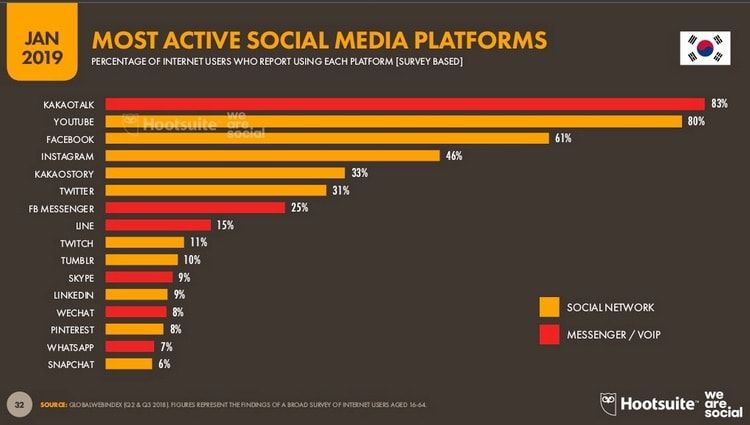
Let’s do a brief analysis on each of the top social networks, along with some thoughts on implications for marketers:
KakaoTalk
KakaoTalk is the iMessage / LINE / WhatsApp / WeChat of South Korea, and it dominates messaging. For all intents and purposes, you can assume pretty much every smartphone in the country has KakaoTalk installed.
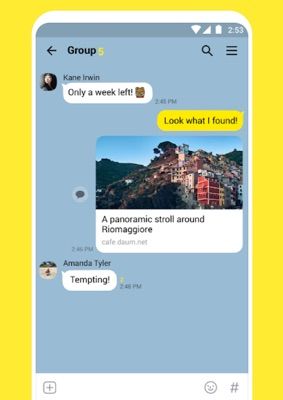
Marketing on KakaoTalk
From a marketers’ perspective: there’s not much going on. As I write this in July 2019, the primary way to use KakaoTalk for marketing is banner ads.
A neat analogy is WhatsApp or Facebook Messenger: giant userbase, but as a marketer your ways to get drive awareness from the platform are limited, and the platform itself is still experimenting with B2B monetization.
If you look through Kakao’s earnings reports, they mainly drive revenue via selling content (games, stickers, music, comics, etc).
KakaoTalk is introducing a more robust advertising platform at some point in 2019, so it will be interesting to see how this develops. It’s still very early days, not just for KakaoTalk, but for every other messaging platform that’s trying to tastefully introduce ads.
YouTube
YouTube is massive in South Korea. As you’ve seen in the previous charts, Koreans spend a ton of time in YouTube, and it’s almost as widely used as KakaoTalk.
Interestingly, despite Naver having its own video service, YouTube continues to dominate.
This makes things interesting for international marketers: there’s a built-in habit of Koreans going to YouTube, a medium that most non-Koreans understand. And there’s a vibrant Korean YouTube influencer scene, with all the familiar niches (makeup, beauty products, reviews) you would expect to find in most countries.
Marketing on YouTube in South Korea
For marketers looking to expand into Korea, YouTube appears to be an excellent starting point. You have a shot at building a meaningful, semi-organic presence on YouTube. And there’s “ad inventory” you can tap into — especially if you’re in B2C, it’s a no-brainer to start experimenting with YouTube Ads or working with influencers.
If you already have video content, you might not even have to re-record translate it: just add subtitles, do some YouTube SEO to pick up Korean-language keywords and you could start evaluating whether it’s worth expanding the effort.
Facebook and Instagram
You really have to hand it to Zuckerberg and crew: Facebook and Instagram work pretty much how they do in every other market.
The dynamics you would expect are present: Facebook vs Instagram growth, demographics, usage patterns, advertising, etc.
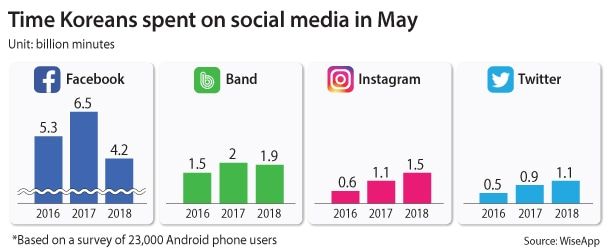
There’s not much else to say here — which should be a relief to anyone reading this and trying to craft their expansion strategy into Korea: whew, finally something that’s similar!
In fact, there’s a bull case of investing in these platforms: the usage of these social networks is high enough to matter, and looks like it will continue to increase.
Marketing on Facebook and Instagram in South Korea
I took a look at some of the Facebook and Instagram ads for companies in Korea, and it looks more or less like what you would see in other countries. The big brands use it for awareness-building or to run multi-channel campaigns. No surprises in ecommerce or gaming, it’s all the same: click here to buy this thing, click here to download this app.
What I found interesting was from a lead gen perspective.
I suppose that because companies build their presence on Naver, they don’t invest on their own websites. And because of this, things like landing pages for lead capture aren’t really a thing. And because that’s not a thing, Koreans aren’t used to clicking ads to fill out forms.
And so, I was not surprised to find a few companies who were using Facebook posts as pseud0-landing pages. Here’s an example of a company using a feed post to promote a meetup:
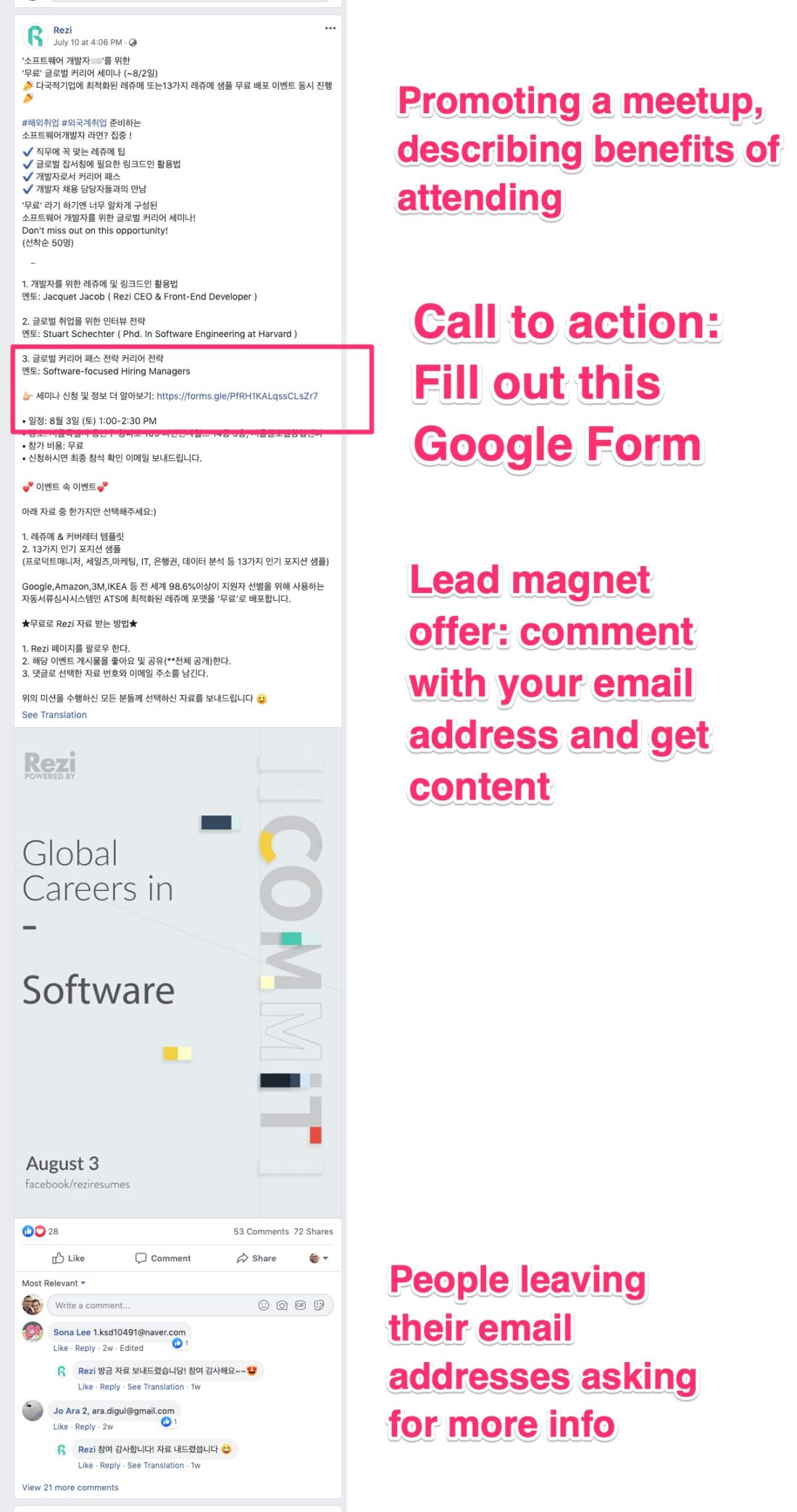
This is a perfect example of what I was talking about at the start of this post: the Korean digital marketing ecosystem is familiar, but different. Facebook is used as a lead gen platform, but not in the way most of us are used to. Sometimes it’s like the screenshot above; sometimes the call-to-action is to join a chat group on KakaoTalk.
I think the implication here is that since lead generation is done in a scrappy way, things like “lead nurturing” or “marketing automation” are concepts that aren’t yet compatible with Korean businesses and consumers.
Especially when you consider the relationship Koreans have with their email address.
Email Marketing Strategy in Korea
Compared to the previous two digital marketing channels we’ve discussed, email marketing is somewhere in the middle: it’s not a completely different paradigm like Naver, but it’s not a “‘pretty much the same” paradigm like social media.
Koreans have email addresses, and usage patterns are roughly the same, but their relationship with their email address is different.
Basically, email is viewed kind of like how you view your physical company mailbox. It’s a place for official, formal things. It’s usually full of spam and junk mail.
Before we get into what this means for marketers, we need to set some context by bringing a few factors into view.
First, Korea has historically had a terrible email spam problem, which means that for decades, people have been trained to wade through a lot of crap in their inbox.
Second, there isn’t really a “sign up for my newsletter” culture in Korea; there aren’t many bloggers who keep in touch with their followers over email. Instead, people build up their followings either on Naver, or on social media platforms like YouTube and Instagram.
The function of email for Koreans is to handle official matters (sign up for accounts, receive documents, receipts) and to to get notifications from other platforms. It’s very rarely to do personal things. Everything else is handled via another medium, like Kakao or phone calls.
The net of this is that email is almost strictly a broadcast channel, it’s not a place where you would build relationships. Imagine a drip email campaign where it’s “from” a person that represents your business — that concept would be very strange in Korea.
Contrast this with how other internet ecosystems think about email, which includes a broader set of use cases: personal correspondence; following bloggers you care about; interacting with businesses.
Email marketing strategy in South Korea
So what does this all mean for marketers?
Overall, your “list” has less value in Korea. If your go-to-market strategy is based on building up an email database and then marketing to that database, you are likely to face inefficiencies in your customer acquisition model.
Practically speaking: expect lower open rates and click rates. You’re competing with more noise, most people use Naver email (and therefore, fewer people have Gmail’s awesome spam filter) and people are generally less invested in what’s in their inbox, unless they’re explicitly looking for it.
Your email marketing campaigns therefore have to have some kind of “scarcity” element in them to cut through.
For B2B, that usually means your email strategy is to get people to a physical event (as opposed to using email to drip-feed them content). For B2C you’re looking at a lot of limited time, limited offer, limited quantity-type of promotions, more so than you would do in other markets.
The Near Future of Digital Marketing in South Korea
We end this post by looking at a few trends that are likely to influence the digital marketing ecosystem in Korea in the near future.
Naver will continue to dominate, but Google is chipping away at their market share
Naver is going to be around for a long time. But Google has a demographic advantage — younger Koreans are more open to using Google, and because of Android’s dominance in Korea, more and more people are being exposed to Google Search.
However, given Korea’s status as a “Tier 2” market for Google Search (not as big as Japan, not a giant potential market like China, not as accessible as Southeast Asia/India) — it’s unlikely that Google will invest the resources needed to properly take Naver head-on. This is something that will take a long time — decades — to play out.
Social media platform usage will continue to increase
In addition to the platforms we discussed, any B2C marketer should be keeping its eye on TikTok, or any platform that young people suddenly start using. Koreans spend a lot of time on their phones, and a lot of time online, and this keeps increasing.
We also haven’t talked at all about LinkedIn, which is basically non-existent in Korea. I found this surprising. There aren’t any local LinkedIn alternatives, and having a several social media accounts is normal, so I’m guessing it’s because Korea isn’t yet a big enough opportunity for LinkedIn to jump in.
What did you think of this post?
Alright. I’ve left out a LOT of stuff, but this post is long enough.
I think of this blog post as a living doc. I’ll update it over time.
Also, I’m not Korean, nor do I live in Korea. I’ve done my best to research based on public information while sanity checking with Koreans and Korean marketers in my network.
I welcome all feedback and corrections, please leave them in the comments.